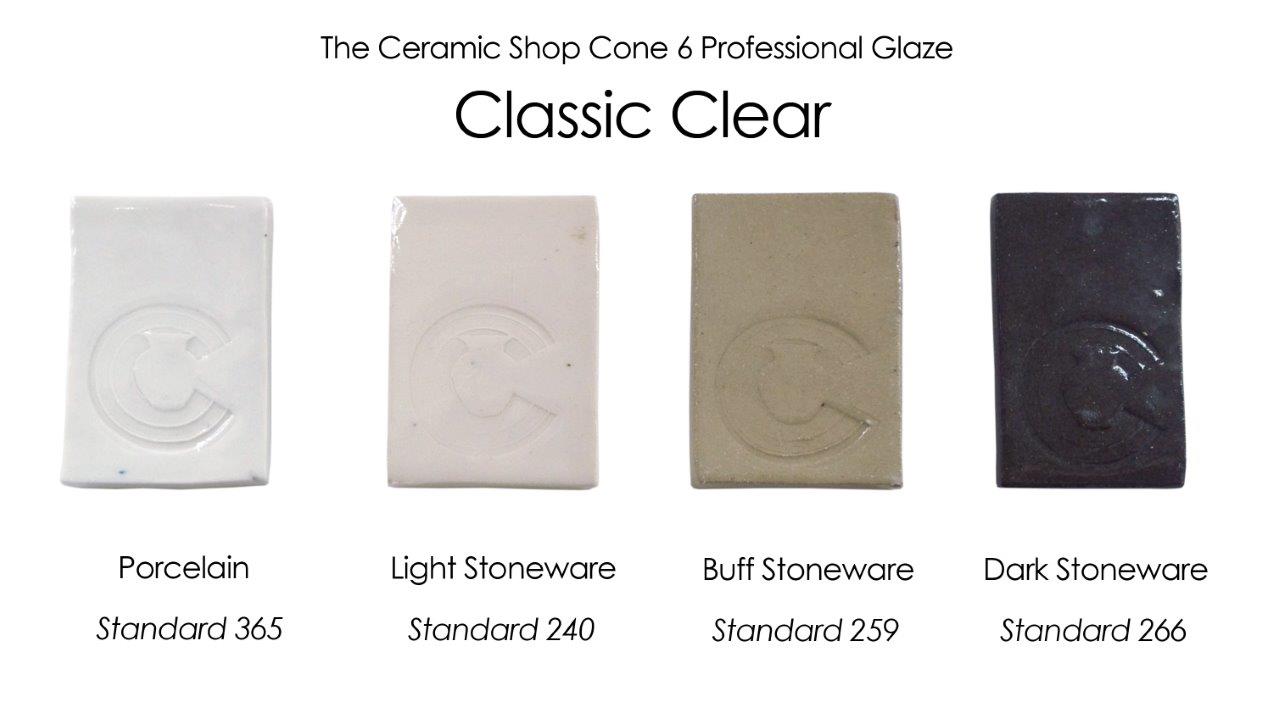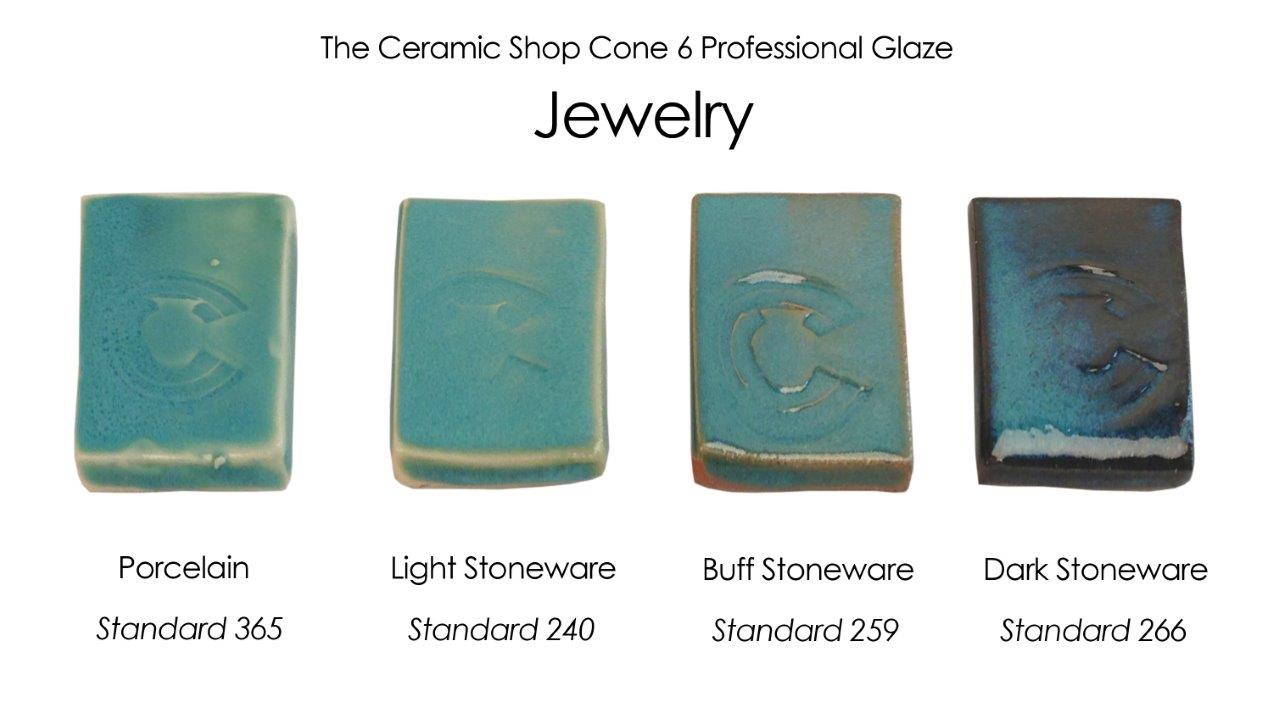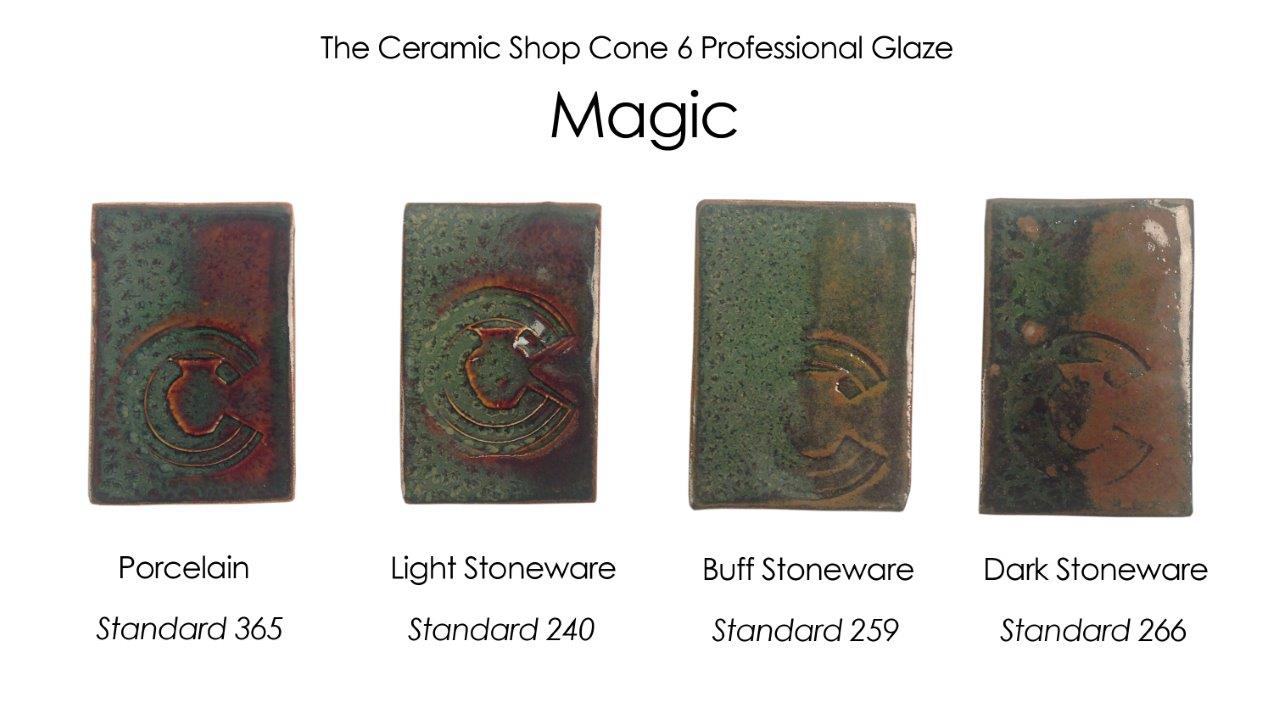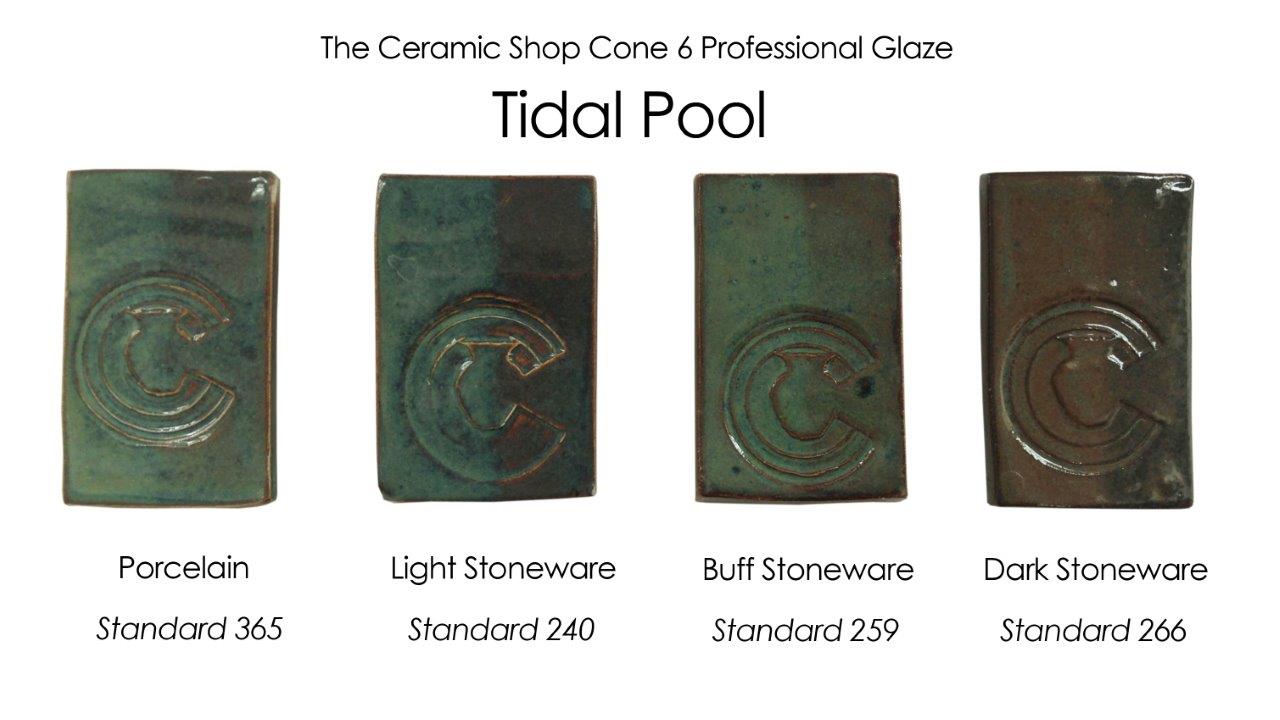CERAMIC SHOP GLAZE MIXING GUIDE
Here are some suggestions for mixing, applying, and firing The Ceramic Shop's cone 6 professional glazes, The Ceramic Shop's Casual Tints, and The Ceramic Shop's Low-Fore cone 06 glazes. We've had our own popular line, produced here in Philadelphia, for over ten years now and there are many customers who swear by our various glazes. Currently, we have three different glaze lines, all made in-house in our Norristown lab.
Below you will find an alphabetical list of mixing, applying, and firing suggestions for our C6 Pro Series. Because we make everything in-house from the bottom up, and because we continue to test our products (to account for material changes and to make adjustments as needed), we really know our products. Our knowledgeable technician, Rachel, has worked extensively with all of these glazes at all stages and is happy to answer your questions regarding our products. She can be reached at veronica@theceramicshop.com.

Amber Clear: If this glaze is too thin, it can have a tendency to give a 'burned-out' look to a surface. This can be a beautiful effect over breaks, however. If mixed to a standard consistency -- buttermilk thickness -- that effect will not be an issue.
Antique Green: Goes a Light bluish green matte with light yellow crystals where thin and light blue, glossy with light crystals where thick. Goes more blue, glossy, and runny on some clay bodies (259) and more matte and brown on others (266). Develops more crystals (and matte surface) the slower the kiln cools.
Astral Blue: This glaze gives a deeper, more opaque blue the thicker it is applied. Breaks a light green and is semi translucent when thin. Looks great on dark clay bodies and layered on top of other glazes.
Black Orbit: The most frequent comment we received about Black Orbit is that it has a tendency to settle. While we have made adjustments to the formula over the past 6 months to resolve this problem, this is definitely a glaze that you do not want to leave sitting for long period. If you store a large wet-mixed batch, reconstitute once a week, especially when not in use. This is a beautiful matte black surface that can go shiny where it pools, and breaks an unexpected chalky yellowish or greenish -- really a unique glaze! Because it is opaque, this glaze works well on a wide variety of clay bodies.
Cash Money Blue: Very stable cobalt blue glaze. This glaze is transparent and can be applied thick for a deep, inky blue, or thinner for a more transparent, watercolor appearance.
Celadon Matte: Single dip (2-3 brushed coats). This is a translucent glaze with a satin surface. It is not quite as translucent as our Electric Celadon Blue or Electric Celadon Green due to the surface quality, so keep this in mind if you are looking for a glaze to put on detailed, carved work.

Classic Clear: A strong, glossy clear- fits well on most cone 6 bodies.

Cotton Candy: Transparent and should be applied on a white clay body or over white slip. May crawl where applied too thick or pinhole if over-fired.
Cranberry: Semi- opaque where thin, opaque where thick. Should be applied on a white clay body or over white slip to develop the most consistent color.
Crocus Red: A rich, reddish glaze with a glossy surface, Crocus Red is a reliable glaze but it does have some quirks. It contains bone ash, so in its liquid state it can have a tendency to develop a caustic crust when stored in small containers, and it can also appear to be thicker than it actually is, once mixed, again due to its acidic nature. Overall, these two factors do NOT affect the glaze's outcome -- however, because of these issues (particularly the glaze's tendency to skew thickness), we STRONGLY recommend testing this glaze before you use it on multiple pieces. It should be applied quite thick to develop a solid red color. This may mean two or even three dips- it is a very stable glaze and is very resistant to running. The results, while reliable, are simply very much tied to mixing and application, so it's a good idea to 'make friends' with this particular glaze before you take the plunge.
Electric Celadon Green: Single dip (2-3 brushed coats), glossy translucent glaze. This is a translucent glaze that works best on porcelain or white stoneware (such as Standard 181). If it is applied to a clay body with any discernable color, testing is suggested to ensure an acceptable color result.

Green Patina: This glaze will fire to a brownish color if it is applied too thin, especially on non-porcelain bodies. While the glaze doesn't have much of a tendency to settle, making sure that your own batch is well-mixed before application is particularly important. May pinhole if applied excessively thick. Not recommended for Standard 266.

Jewelry: This variegated blue glaze is one of our most popular, particularly because of its always-stunning results. This glaze, it should be noted, does look a bit different on different clay bodies: In the first place, it's not entirely opaque, so the color of the underlying clay body will indeed affect its final outcome. The glaze is also seemingly iron-sensitive, so keep this in mind when applying it to rich, dark, stonewares -- in this case, you can expect your color to get deeper and darker.

Magic: The outcome of this glaze is heavily dependent on thickness. When thin, it can range from a deep amber on white clay bodies to a more opaque brown on darker bodies. When thick, this glaze developed a variegated blue, green, and amber surface.
Metallic Black: High gloss black glaze with subtle iridescent mottling. Breaks a bluish green on white clay bodies.
Orchid: Unique purple glaze with a buttery satin finish. Very opaque. May pinhole on very high iron clay bodies.
Satin Rutile: Like most of our matte glazes, Satin Rutile does better when it is allowed to have a slower cooling period in the kiln. This means that if it is fired in a larger kiln that takes longer to cool, you can expect amazing results! If you are firing works in a tiny test kiln, consider adding a down ramp at the end of your glaze program.

Tidal Pool: Dependable, semi opaque gloss glaze. Dark opaque teal where thick, breaking semitransparent amber where thin.
White Gloss: This stable, opaque white glaze can be fired to cone 5 for a more satin finish, to cone 7 for a higher gloss finish. Pinholes on Standard 266 where thick.

White Matte: On white to buff bodies, this glaze is an opaque matte white, with grey and blue tones throughout. A thicker coat will develop some gloss areas, along with more blues and greys. On very dark bodies (like standard 266) this glaze turns a warm, variegated, matte brown. For a true, even matte white, apply this glaze thin (consider spray application) on a light clay body.
Wintergreen: This variegated glaze is glossy and very nearly opaque, with breaking on edges. Pools a shiny, glossy green where thick; as such, it can run a bit when it's fired to a 'hot' cone 6.